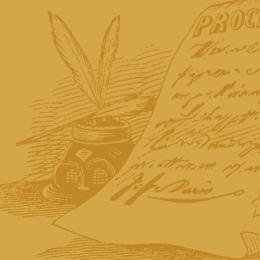Moments in Time: The Battle of Perryville - Part III


Evening, October 8, 1862
The heroic stand of Starkweather’s men saved the Union left. Now men from both sides rushed to fill the center, where the battle was nearing its climax.
1. “One after one of my men were cut down, but still, with unyielding hearts, they severely pressed the enemy, and in many instances forced them to give way.”—Col. Michael Gooding, commanding the 13th Brigade
The first reinforcements on the scene were the men of Michael Gooding’s brigade, who arrived just in time to meet the advance of Woods’s Confederates in the center. Expecting to find the Federals low on ammunition and morale, the grey line withdrew in disarray when the fresh Illinois and Indiana infantry unleashed a jarring volley down the slope.
2. “The General says go where the fire is hottest.”—Colonel Hardin Perkins, aide-de-camp
Hardin Perkins galloped up to Brigadier General Saint John Liddell with an urgent message. Liddell’s brigade was the last Confederate reserve in this part of the field. After a day of bloodshed the battle had reached its decisive moment. Making a quick decision (later remarking that “the hottest place seemed to be everywhere”), Liddell led his men towards the center in the gathering darkness.
3. “Every mother’s son of them are Yankees!”—Major General Leonidas Polk, commanding the Confederate Right Wing
The moonlight made it extremely difficult to distinguish between friend and foe. Liddell’s brigade, with General Polk accompanying, made it within thirty yards of Gooding’s line before he called for a halt. Neither side knew the identity of the men so close by in the night, and neither side wanted to risk killing friends. Polk himself rode ahead to reconnoiter. He was saved from certain death or capture only by his quick wit. Finding himself face-to-face with an entire regiment of Union soldiers, he pretended to be a Union general, chewed out the regiment’s colonel, and then rode slowly back to the Confederate lines to deliver his warning. Liddell gave the command to fire. The southern volleys virtually annihilated the confused regiment, the 22nd Indiana, killing or wounding nearly 200 men within a few moments. The Hoosiers’ inevitable flight turned the rest of Gooding’s brigade, giving Liddell control of the Union center. Turning to General Polk, he requested permission to continue the attack.
4. “I want no more night fighting. Await orders just as you are.”—Major General Leonidas Polk, commanding the Confederate Right Wing
To Liddell’s astonishment, Polk refused to authorize further action. Perhaps his brush with death influenced the bishop-turned-general’s decision. Liddell’s protests fell on unyielding ears. With this order, or lack thereof, the possibility of a significant Confederate victory slipped away.
The southern army held the upper hand after a day of unbelievable carnage, but the northern forces had not been fully broken. Most of the Confederate officers were ready to continue the battle. Braxton Bragg, however, lost his nerve at the thought of Union reinforcements. The next day he ordered a retreat. The invasion was over, and the high tide in the West began to recede.
Moments in Time at Perryville: Introduction | Part I | Part II
Sources:
Confederate Veteran
Kenneth Noe, Perryville: This Grand Havoc of Battle
Kenneth A. Hafendorfer, Perryville: Battle for Kentucky
Maps originally by Steven Stanley, modified by Sam Smith



